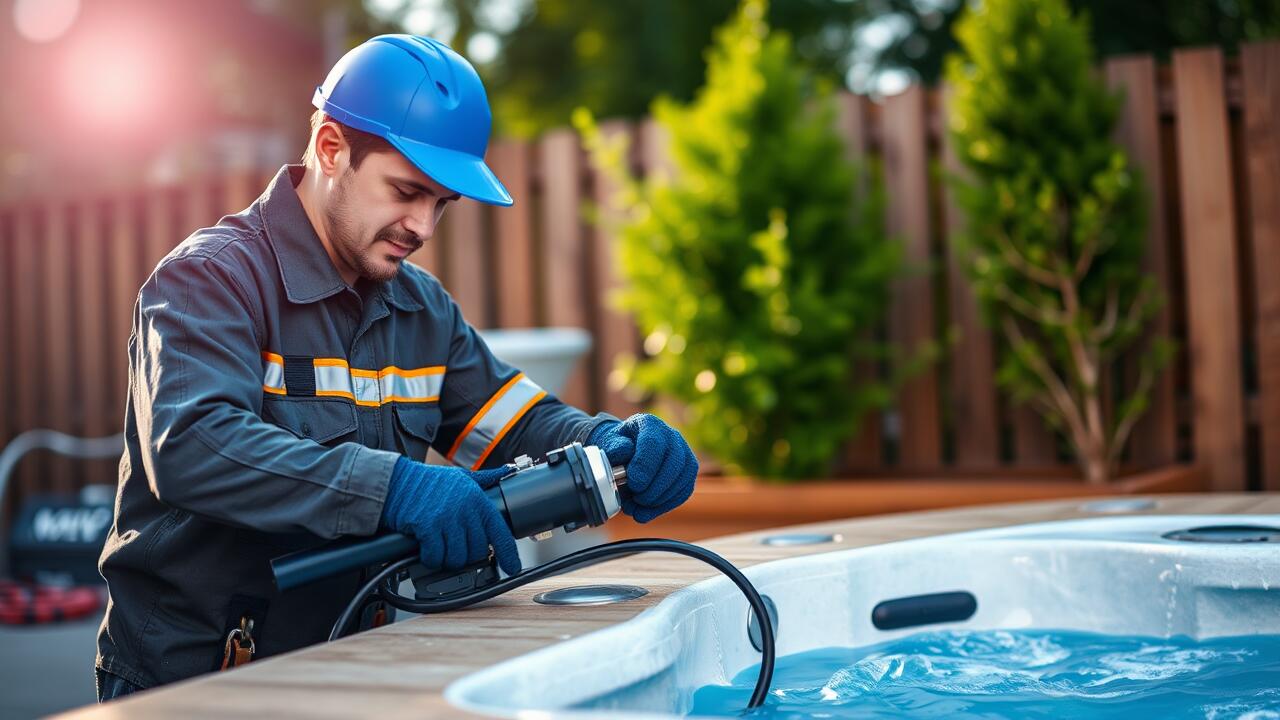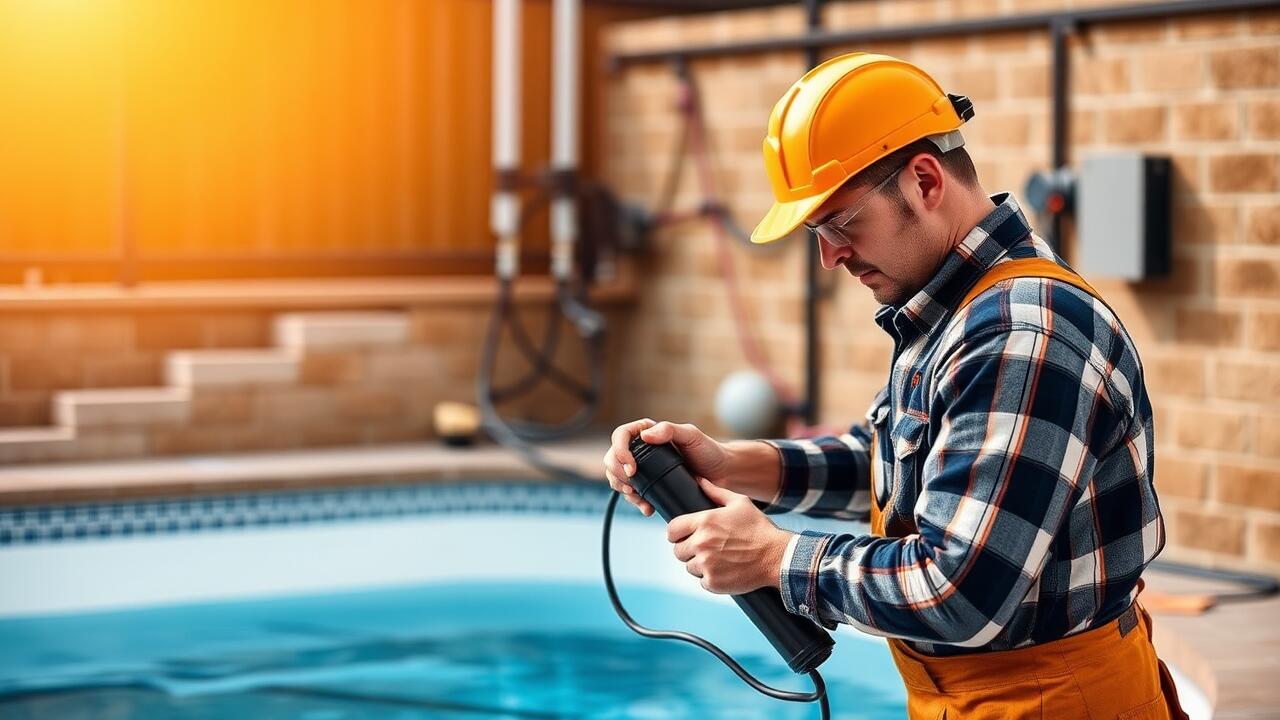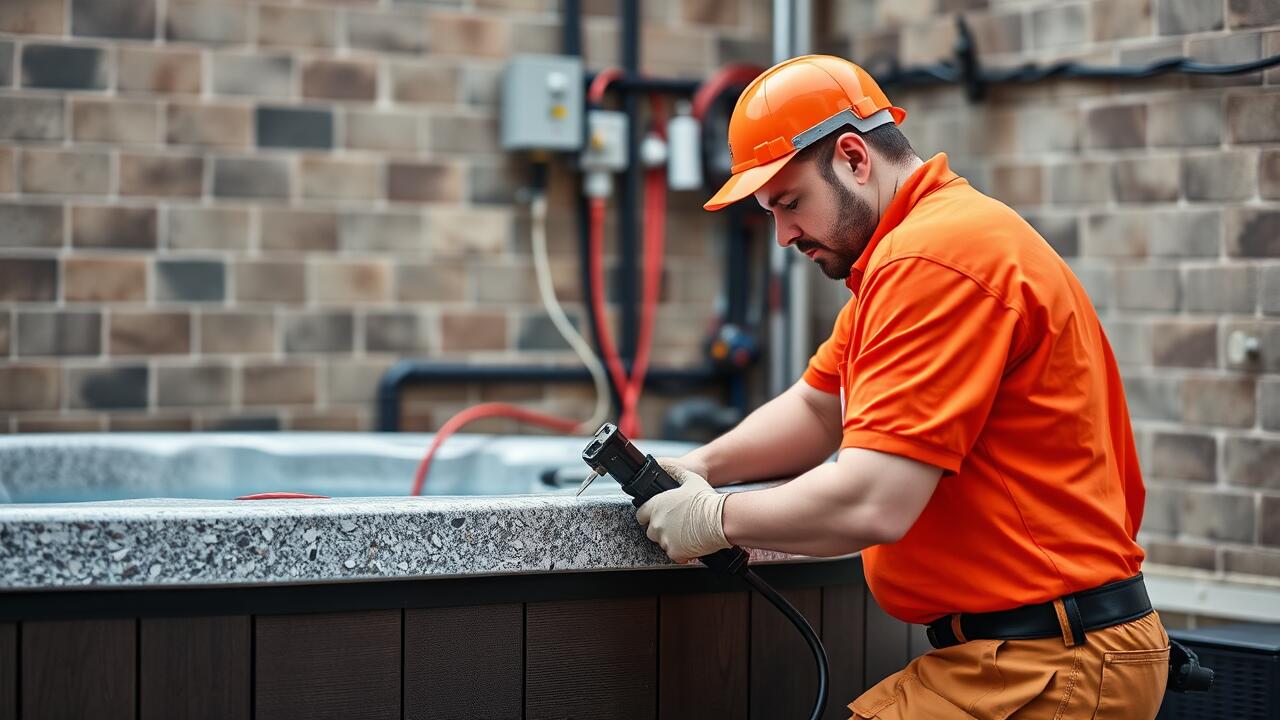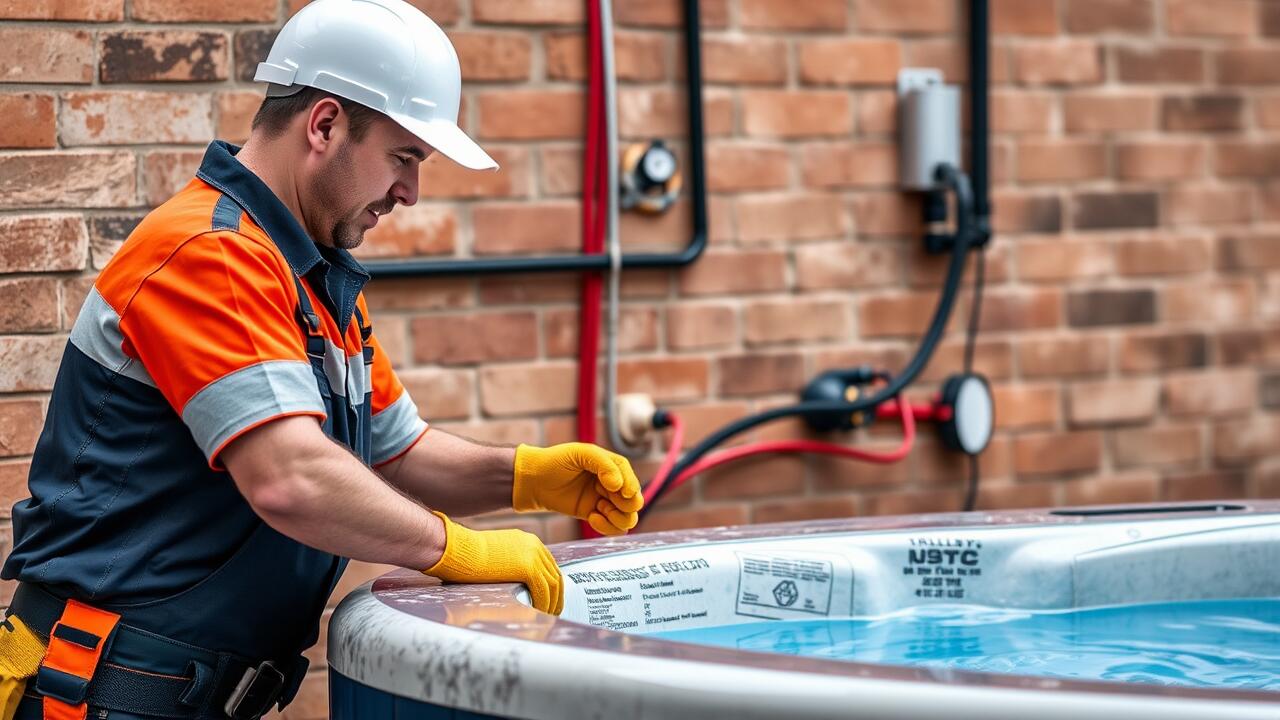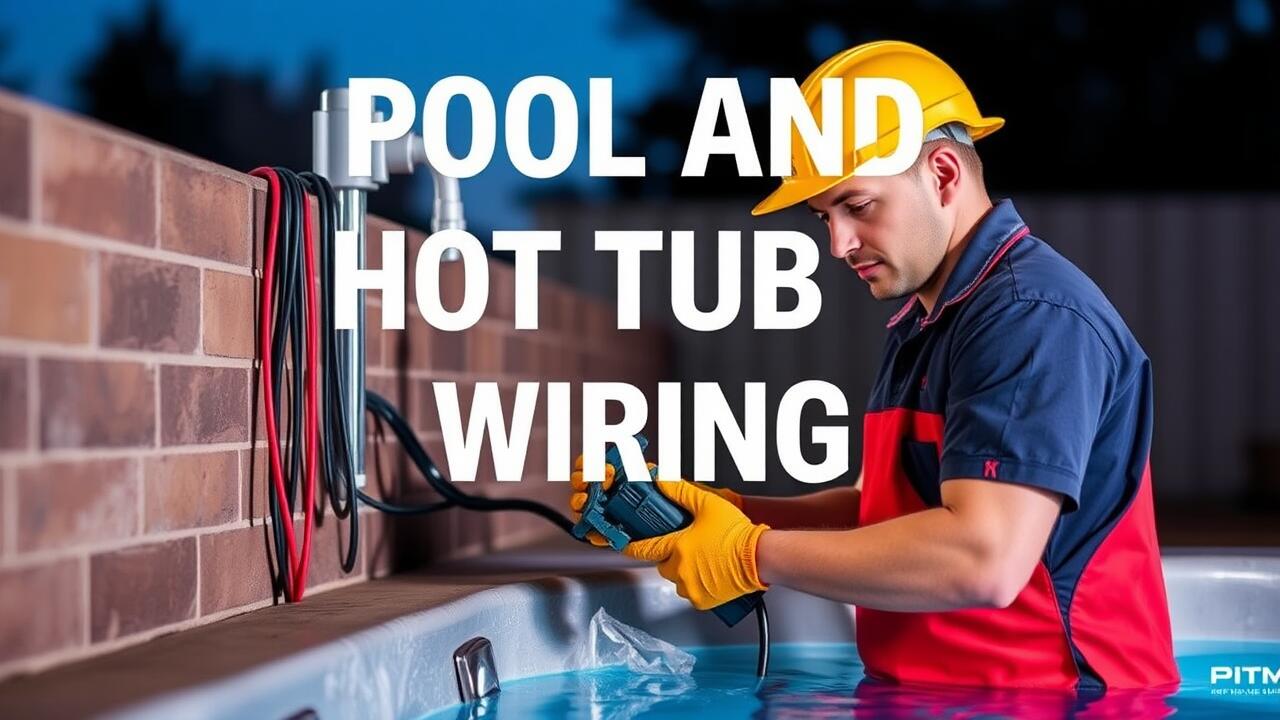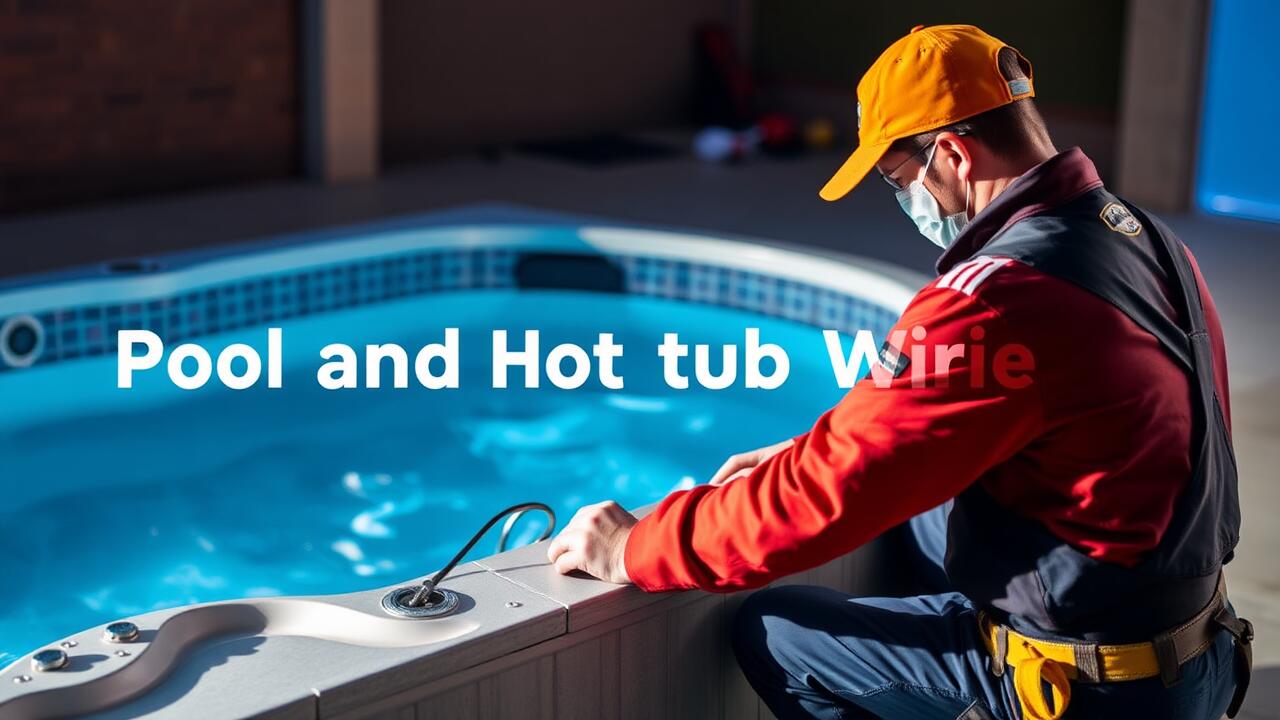
Wiring Methods for Hot Tubs
When installing a hot tub, the choice of wiring method plays a crucial role in ensuring safety and compliance with the National Electrical Code. The use of underground wiring is commonly recommended, particularly for outdoor hot tubs. This method minimizes the risk of exposure to the elements and physical damage from lawn equipment or foot traffic. Utilizing armored cables or conduits can provide additional protection for the wiring.
In areas like Bellaire West, Houston, adhering to local regulations is vital, especially when considering the specific requirements for pool and hot tub installations. It is essential to ensure that the wiring is rated for wet locations and installed according to manufacturer specifications. Employing proper wiring methods not only maintains safety standards but also contributes to the overall functionality of the hot tub system.
Types of Cables and Conduits
When selecting cables and conduits for hot tub installations, it is crucial to follow the National Electrical Code guidelines. Typically, the use of copper conductors within PVC conduits is recommended for their durability and weather resistance. According to local regulations, the specific gauge of wire may vary based on the hot tub's amperage requirements. It is essential to consult the manufacturer's specifications to determine the appropriate cable type and size to ensure safe operation.
Flexible conduit options are also available and can be beneficial for outdoor installations. These conduits offer easier installation in tight spaces and can adapt to the movements of the surrounding environment. Since many homeowners in the Bellaire Junction area of Houston have pools and hot tubs, understanding the specific wiring methods tailored for such installations is vital. This ensures that the electrical system remains safe and reliable while meeting local safety standards.
Bonding and Grounding for Hot Tubs
Proper bonding and grounding are crucial for the safe operation of hot tubs. Bonding connects all metal components within the hot tub and its associated equipment to prevent electrical shock hazards. This includes the hot tub shell, metal railings, and any nearby conductive surfaces. The bonding process ensures that if a fault occurs, the electrical current has a safe path to ground, reducing the risk of electrical accidents.
Grounding serves a similar purpose, providing a direct physical connection to the earth. This protects users from electrical surges and lightning strikes. When installing a hot tub, it is essential to follow the National Electrical Code guidelines meticulously. For residents in areas like Pool and Hot Tub Wiring Spring Branch West, Houston, using local licensed professionals can ensure that all bonding and grounding practices are up to code, fostering a safer environment for everyone.
Ensuring Proper Electrical Connections
Proper electrical connections are crucial for the safe operation of hot tubs. All wiring should adhere to the guidelines outlined in the National Electrical Code. It's essential to use the correct wire sizes and types, ensuring compatibility with the hot tub's requirements. Connections should be tight and secure to prevent arcing, which can cause overheating. Using appropriate connectors and terminals not only enhances safety but also ensures longevity in the wiring system.
In areas like Pool and Hot Tub Wiring Spring Branch West, Houston, local codes must be followed in addition to national standards. Installing ground fault circuit interrupters (GFCIs) is necessary to protect users from electrical shock. Furthermore, regular inspections of connections help identify any wear or damage. Maintaining proper electrical connections is vital to prevent hazards and ensure that the hot tub operates efficiently.
Outdoor Installation Guidelines
When installing outdoor hot tubs, it is essential to consider the specific electrical requirements laid out in the National Electrical Code. Hot tubs should be located a safe distance from other structures, ensuring proper access for maintenance and emergency situations. Adequate clearances around the unit facilitate both safety and convenience. The installation area must also be level, stable, and free from excessive moisture to protect the electrical components from potential damage.
Protecting electrical components from the elements is crucial in outdoor installations. Utilizing weatherproof enclosures and outlets can prevent moisture ingress and reduce the risk of electrical shocks. Proper drainage around the hot tub area helps minimize water accumulation, which can compromise electrical safety. It is recommended to consult professionals in Pool and Hot Tub Wiring Houston for tailored advice and safe installation practices that comply with local building codes.
Protecting Electrical Components from the Elements
Electrical components associated with hot tubs require protection from environmental hazards to ensure safety and longevity. Weatherproof enclosures should be used for all outdoor wiring connections, offering a barrier against moisture and debris. Additionally, circuit breakers and other electrical devices must be rated for outdoor use to withstand the specific challenges that come with exposure to the elements. Regular inspections can help identify any wear or damage to these components, allowing for timely maintenance.
Installation practices significantly influence the durability and safety of electrical systems for hot tubs. Conduits should be sealed at entry points to prevent water infiltration. Furthermore, using the right type of cable, such as UF (underground feeder) or rated conduit, mitigates risks associated with water exposure. Consulting with professionals like Pool and Hot Tub Wiring Greater Heights, Houston can ensure adherence to local codes and proper installation techniques.
FAQS
What is the National Electrical Code (NEC)?
The National Electrical Code (NEC) is a set of guidelines established to ensure safe electrical installations and practices in the United States, including regulations for specific applications like hot tubs.
What are the recommended wiring methods for hot tubs according to the NEC?
The NEC recommends using specific wiring methods such as underground feeder (UF) cables or suitable conduit systems to ensure safety and compliance for hot tub installations.
What types of cables and conduits are suitable for hot tub installations?
Suitable cables for hot tubs include UF cables and THHN/THWN conductors housed within conduits. The choice of conduit, such as PVC or rigid metal conduit, depends on the installation environment and local codes.
Why is bonding and grounding important for hot tubs?
Bonding and grounding are essential for preventing electric shock hazards. Proper bonding ensures that all metallic parts of the hot tub are connected to a common ground, reducing the risk of electrical faults.
What precautions should be taken for outdoor hot tub installations?
Outdoor hot tubs should be installed according to NEC guidelines that include protection against moisture, ensuring proper electrical connections, and using weather-resistant equipment to safeguard electrical components from the elements.
